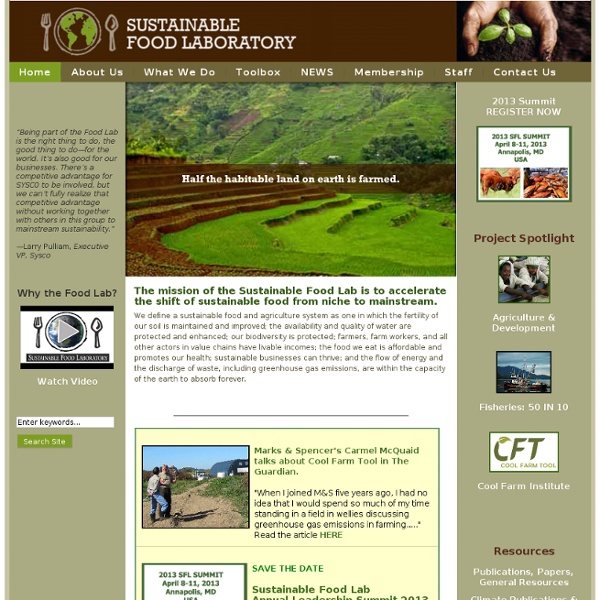



Daily Environmental News | National Geographic News December 12, 2012 Want to know if you're literally sitting on a gold mine? Get some termites, a new study suggests. The drive for a 21st-century electric grid faces privacy worries. What will happen to the detailed information on home energy use that utilities will be able to collect through smart meters? December 11, 2012 So much hot water goes down the drain that cities worldwide are recognizing sewer heat as an untapped resource that can help cut energy costs. December 10, 2012 The United Kingdom, reliant on natural gas, moves toward lifting its hydraulic fracturing ban. An Australian dog specially trained to locate buried human bones by scent could aid archaeologists. Complex hiding behavior encased in amber for 110 million years. December 7, 2012 <strong>The National Oceanic and Atmospheric Administration proposes protections for 66 coral species. Turns out plants grow just fine on the International Space Station. December 5, 2012 December 4, 2012 November 30, 2012 November 29, 2012 July 9, 2012
SUSTAINABLE FOOD CENTER | Austin, Texas The Weberian Apparatus SAFSF.ORG :. Sustainable Agriculture & Food Systems Funders Terre à terre, les archives Environmental News Network -- Know Your Environment www.centrosachamama.org | Welcome: Sachamama Sachamama Center for BioCultural Regeneration (SCBR) is a non-profit organization in the Peruvian High Amazon in the town of Lamas, Department of San Martin, dedicated to the biocultural regeneration of the region in collaboration with the indigenous Kichwa-Lamistas, the descendants of pre-Columbian inhabitants, as well as with the local Education Board of the district of Lamas (Sp. acronym UGEL). SCBR was founded in 2009 by the anthropologist Frédérique Apffel-Marglin. SCBR shares a worldview in which the human, the non-human, as well as the community of spirits, are all kin to each other. By ‘biocultural regeneration’ we mean to honor this integration of all life as well as the cyclicity of its rhythms. SCBR is bringing together an expanding collective of scholars, activists, healers, artists, and shamans that cross the North-South divide. SCBR is registered in Peru as a non-profit organization and in the US has applied to the IRS for a tax exempt 501-C(3) status.
E A R T H . C L I N I C - Folk Remedies and Holistic Cures Water Shortage! Ever since the beginning of this nation, Americans have always been able to take for granted that there would always be plenty of fresh water. But unfortunately that is rapidly changing. Due to pollution, corruption, inefficiency and the never ending greed of the global elite, the United States (and the entire world) is heading for a very serious water shortage. According to a new report released by the Natural Resources Defense Council, more than one-third of all counties in the lower 48 states will likely be facing very serious water shortages by 2050. And Americans certainly do use a lot of water. In fact, a five minute shower by an American uses more water than a typical person living in poverty in a developing country uses in an entire day. For hundreds of years, North America has been blessed with an overabundance of fresh water, but those supplies are quickly running dry. If the breadbasket of America were to dry up, what would that mean for the future of this nation? Why?
ecomeal - dialogues pour une restauration plus durable Earth Island Journal | Earth Island Institute SeaWorld’s Advertisements Are Full Of Lies (Video) In effort to reinvent its image, theme park resorts to fudging facts again by Laura Bridgeman – October 6, 2017 The International Marine Mammal Project released a new video last week that debunks many of the lies SeaWorld tells the public and its shareholders, lies that are increasingly getting the theme park and entertainment company into hot water. At its core, SeaWorld…> Read more A Tale of Two Wild Sisters Saga of African wild dogs siblings offers a stark reminder of the challenges predators face in Man’s world by Megan Claase – October 4, 2017 One of the greatest things about spending your time studying endangered African wild dogs (Lycaon Pictus) is getting to know the dogs as individuals. An Unlikely Alliance Holds Strong against Keystone XL In the fields of Nebraska, Jane Kleeb has grown a bipartisan coalition of farmers, ranchers, tribes and environmental advocates to fight an international pipeline by Gail Ablow – October 3, 2017
GRAIN — Home Natural-Remedies-For.com Stop the Canadian Oil Sand Madness Now Historically, surface mining has been used to extract tar sands and this method has produced at much CO2 as all the cars in Canada. The tailings, what are left when the bitumin has been extracted, are being stored in ponds. In the tailings pond, the sand, clay and water separate out. The water is sent back to the plant to be reused. Even so, the huge amounts of water needed threatens the world's third largest watershed. Mining is the oldest technique for removing the bitumin from oil sands. Between the ever increasing air pollution and the poisons and heavy metals built up in the tailing ponds that may now been seen from space, there has been a rise in certain cancers and syndromes since oil sand production ramped up in 2005.